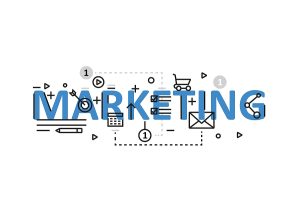Ad spend is one of the fastest ways to get your service or product in front of as many people as possible. However, the cost, in this case, significant amounts of money, means it’s very important to make sure you’re reaching the right people and directing them to the right places. Paralleling the podcast episode, Stop Pretending Bad Clients Are a Systems Problem, it’s important you’re targeting the right people with your ads and have the systems in place to best capitalize on their clicks.
Understanding Ad Targeting
It’s important to understand what ads can target so you can build the right customer profiles and avatars that take these factors into account. Below, we’ll use both Google Ads and Facebook Ads as a basis, two of the most popular online advertising platforms.
- Budget: How much money can you spend? This affects everything from platform/ad type to the keywords and run length of your ads. It’s important to understand how to spend the right amount on ads.
- Platform: Where do your customers interact online? What platform is the best “fit” for your business? Advertising on a social media platform is only worth it if you can organically compete on there as well. Paid search only works if you can afford the cost of keywords.
- Ad Types: Every ad platform has different ad types that run in different locations. Facebook has both traditional ads and “boosted” posts, and Google can show your ads on Search, YouTube, and third-party websites. Know where you want to target to not spread out your spend.
- Demographics: Who wants to buy your product? Who do you want to sell to? Knowing the age, gender, and income are all great places to start and target. It’s all key information that marketers know how to use.
- Location: Where are your clients? Do you have a service area? Sometimes it’s best to have a wide net (such as all of Massachusetts), and sometimes it’s best to directly target cities or zip codes.
- Interests: Facebook and Google allow you to also include interests of the user, which denotes previously seen content, search history, clicked pages, and other metrics, allowing you to build a more receptive audience for your ads.
Not sure where to start? Check out our blog, The First Step of Marketing: Finding Your Customers. The above are also some of the building blocks for building customer avatars and ideal client profiles, which are larger marketing tools. Learn more about them here.
Building a Better Lead Generation Pipeline
Once you’ve figured out “who” your ads will be targeting, it’s important to have a “where” to send them. For most businesses, this will be their website. Here, you get to completely control what your customers see and do, allowing you to build sales and marketing pipelines that funnel them to take action on your site. Known also as a customer journey, building strong calls to action and even having dedicated landing pages for ads can better turn ads into lead generators.
About the enVisioning Success Podcast
This article is based on topics discussed in enVisioning Success, our weekly podcast hosted by Vision Advertising CEO Laura DiBenedetto and COO Julia Becker Collins. In it, they discuss all things business and marketing, from lead generation to leadership. Find us on PodBean to download from your platform of choice, or subscribe to our mailing listto get new episodes and other news delivered directly to your inbox. Interested in working with Vision Advertising? Learn more about our services and contact us today.




